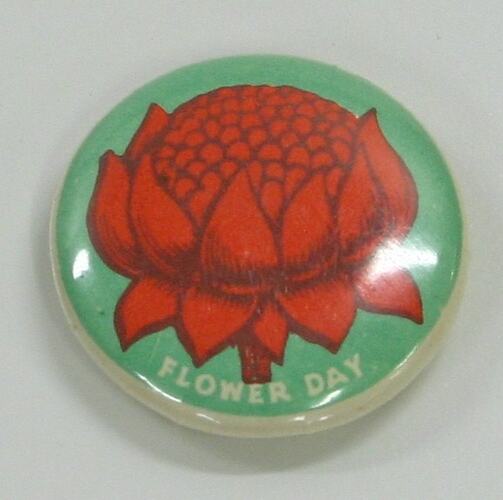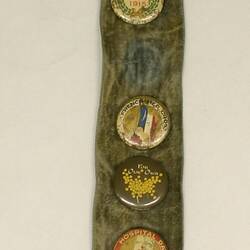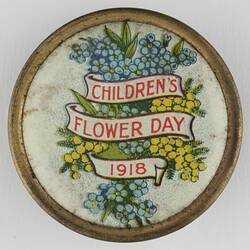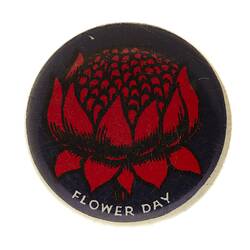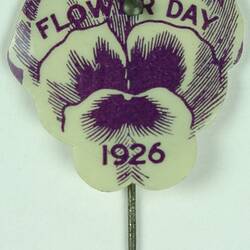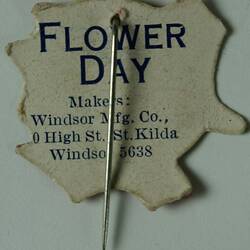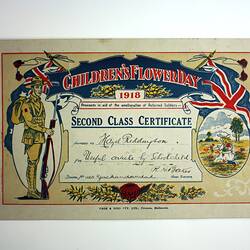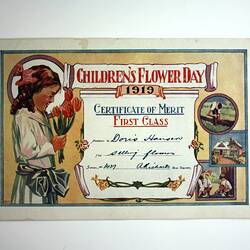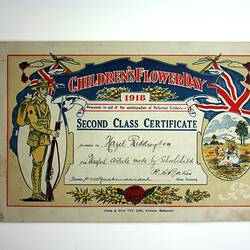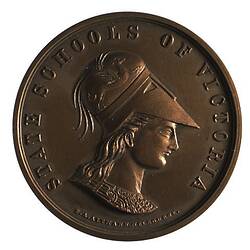Summary
Alternative Name(s): Button
Plastic coated, metal Flower Day badge. No known manufacturer.
Flower Day had its origins in the League of Young Gardeners, created in Victoria in 1916 to 'swell the war relief fund, by cultivating garden plots at home'. From this movement sprang several 'Flower Days' which raised £126,354 for war relief. In 1916, the Victorian Education Department instructed teachers to promote gardening initiatives, and announced that there would be a November Flower Day. The main event of the Day was to be a fund-raising flower show from school gardens - 'Let the children feel that the show is to be their show', advised Supervisor of School Gardening, Cyril Isaac. At schools, the day consisted of morning lessons on war-related topics; in the afternoon schools set up street stalls to sell bouquets and button holes. The main show was not held in 1918 due to stringent war economies, but £50,000 was still raised. The event petered out after World War I.
Subsequent flower days were also established for other causes. For instance, Adelaide's annual National Flower Day was inaugurated in 1938. It is not known which 'flower day' this badge relates to.
Physical Description
Circular, plastic coated metal badge in red, green and white. The text appears in white below a red waratah flower, which itself sits on a green background. The metal pin is attached to the back.
More Information
-
Collecting Areas
-
Acquisition Information
Donation from Mrs E. Riddington, Before 29 Aug 1986
-
Place Used
-
Inscriptions
'FLOWER DAY'
-
Classification
-
Category
-
Discipline
-
Type of item
-
Object Measurements
2.5 cm (Length), 2.5 cm (Width), 0.5 cm (Height)
-
References
Information on Flower Day from the Australian War Memorial web site - record for REL39124 - Fundraising badge : Children's Flower Day 1919 Peace Year, [Link 1] accessed 27/9/2012; and Rosalie Triolo, 2012. 'Our Schools and the War', pp. 88-90.
-
Keywords
